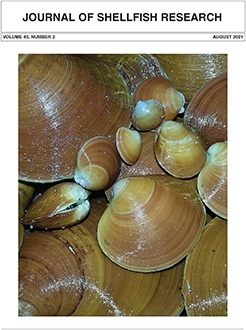Ocean quahogs (Arctica islandica) are the longest lived bivalve on Earth. Individuals on the deep continental shelf off Georges Bank can survive for centuries, and in the colder, boreal waters of Iceland, ages over 500 y can be reached. Ocean quahog landings in the United States represent a $24 million industry, yet assessment models operate with no age data because of the substantial sample size required to develop adequate population age distributions for such a long-lived species, the unknown error associated with age estimates, and the extensive time and financial investment required to create production-scale age datasets. Inclusion of age data for this species requires precision metrics to evaluate aging uncertainty such as percent agreement, percent error, coefficient of variation, and tests of bias. To move forward using error-validated age-composition data, a 3-fold error protocol was developed using a large dual-reader dataset (n = 610) from Georges Bank. First, a proxy age-validation study was performed to corroborate an aging method, followed by error evaluation in the context of age-reader bias, precision, and error frequency. Error thresholds were established for each of the three error methods. Georges Bank samples ranged from 33 to 261 y of age and met the predetermined error thresholds for bias (conditionally because of significant and nonsignificant results), precision (average coefficient of variation less than 7%), and error frequency (less than 10%). Consequently, age estimates were deemed acceptable to support age frequency analyses. Precision and bias error were greatest for the youngest animals and, in the context of age-reader bias, error rates were higher for young male ocean quahogs than for young females. Improved age validation of young, sex-differentiated A. islandica will constrain aging error and guide refinement of both aging and age-error protocols.
How to translate text using browser tools
14 September 2021
Attainability of Accurate Age Frequencies for Ocean Quahogs (Arctica islandica) Using Large Datasets: Protocol, Reader Precision, and Error Assessment
Kathleen M. Hemeon,
Eric N. Powell,
Eric Robillard,
Sara M. Pace,
Theresa E. Redmond,
Roger Mann
ACCESS THE FULL ARTICLE

Journal of Shellfish Research
Vol. 40 • No. 2
August 2021
Vol. 40 • No. 2
August 2021
age-reader
Arctica Islandica
bias
error
ocean quahog
precision




